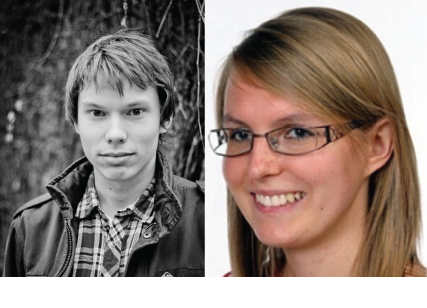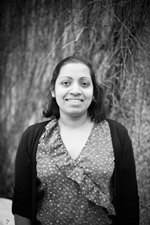Previous events - Page 59
By Clint Perry, Cognitive Neuroethologist from Queen Mary University, London, UK
The evolution and spread of human culture are intriguing topics by themselves, but who knew cultural dynamics could be included into demographic population models?
"Veksteksperiment av makroalger med kommersiell interesse; med hovedfokus på Palmaria palmate”
By Andries Richter, assistant professor at Wageningen University & Research
This Friday, September 15th, we're discussing a paper by Scranton et al. (2016): "The importance of the timescale of the fitness metric for estimates of selection on phenotypic traits during a period of demographic change".
Hope to see you there!
”Telomere length does not correlate with individual quality in a population of blue tits (Cyanistes caeruleus)”
”Artiodactyl brain-size evolution
A phylogenetic comparative study of brain-size adaptation”
Characterization of Rab proteins involved in cell migration
Seminar will feature two short talks entitled
The repeat structure of two paralogous genes, Yersinia ruckeri Invasin (yrInv) and a “Y. ruckeri Invasin-like molecule”, (yrIlm) sheds light on the evolution of adhesive capacities of a fish pathogen by Agnieszka Wrobel from Dirk Linke group
and
Unicellular origin of the Microprocessor and microRNAs by Arthur Haraldsen from Kamran Shalchian-Tabrizi group
Production and Purification of Membrane Scaffold Protein and Class IID bacteriocin Enterocin EJ97 from Enterococcus faecalis EJ97
Body size is often linked intricately with survival and reproductive rates, and therefore affects population dynamics. It is not unlikely for population collapses to be preceded by a change in body size distributions. If those changes happen long enough in advance, they may serve as early warning signals to predict population collapses.
We welcome you to two open lectures! Meave Leakey on "Milestones in the story of us – why and when did we come to be?", and Alan Alda on "Getting beyond a blind date with science". This event is part of the University’s annual celebration.
”Foraging strategies of wild gelada monkeys (Theropithecus gelada) in an Afroalpine grassland at Guassa, Ethiopia”
”Comparing growth of the freshwater rotifer Brachionus calyciflorus in four differently modified versions of Guillard’s WC medium”
By Dr. Adam Philippy, National Human Genome Research Institute
Together with the Double Intraperitoneal Artificial Pancreas project the Centre welcomes Professor Francis J. Doyle III, Dean of John A. Paulson School of Engineering and Applied Sciences (SEAS), Harvard University, and scholar in chemical engineering to present his latest work on testing algorithms in clinical settings for an artificial pancreas and the future technology for the millions of individuals who are affected by Type 1 diabetes mellitus (T1DM). Prof Doyle has devoted his research to understand and characterize biological systems by a systems engineering approach, contributing to the fields of systems biology and functional biomedical control, while combining computational and experimental work.
”Organohalogen contaminants in the Antarctic top predator, south polar skua Catharacta maccormicki): levels and patterns, relationship to dietary descriptors and change over the past decade”
DLN has joined in as co-organizer of the Network Biology meeting organized by NORBIS and CCBIO. Highly renowned international speakers are confirmed for the meeting.
For the Evogene seminar Monday 21th August Sundy Maurice and Jørn Henrik Sønstebø will present the project FunGen and a case study of the genetic structure among 11 polypore fungal species. Fungal Conservation Genetics (FunGen) is a collaborative project with NINA, NIBIO and SLU, aiming to reveal the effect of forest fragmentation on the genetic variation of wood-decay fungi throughout Fennoscandia. Jørn Henrik Sønstebø is a population geneticist who has recently joined the mycology Group, will briefly present his background (NMBU, NIBIO, NIVA, NHM, UiO etc. and how FunGen will benefit from his expertise.
Identification of potential adhesin receptors for Yersinia ruckeri: expression and purification of Yersinia ruckeri Invasin
Abstract
For the human population to maintain a constant size from generation to generation, an increase in fertility must compensate for the reduction in the mean fitness of the population caused, among others, by deleterious mutations. The required increase in fertility due to this mutational load depends on the number of sites in the genome that are functional, the mutation rate, and the fraction of deleterious mutations among all mutations in functional regions. These dependencies and the fact that there exists a maximum tolerable replacement level fertility can be used to put an upper limit on the fraction of the human genome that can be functional. Mutational load considerations lead to the conclusion that the functional fraction within the human genome cannot exceed 25%, and is probably considerably lower.
Target group: PhD students and advanced master students interested in Systems Biology and Systems Medicine. Course elements: lectures, literature study, tutorials and hands-on modelling
Late Lunch Talks on brain evolution in vertebrates by Masahito Tsuboi from CEES.
This Friday, July 7th, we're discussing a recent paper from the American Naturalist by Brombacher et al. (2017): " The Breakdown of Static and Evolutionary Allometries during Climatic Upheaval".
Hope to see you there!
”Data fitness for use in conservation planning. Conservation of crop wild relatives in Norway”




